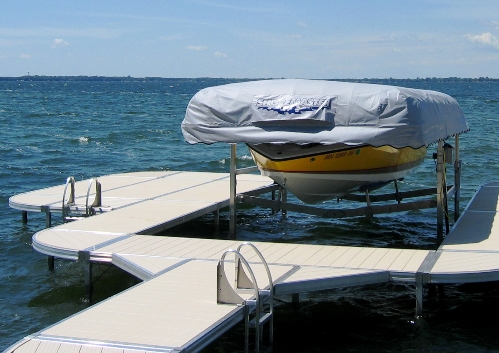
Jul 30, 2019
BOAT LIFT SELECTION
Purchasing a boat lift (new or used) can be very confusing. There is a lot to consider before making your selection. This article will assist you in making the right decision.
Let’s start with, where will you be using the boat lift?
Why is location important? The location will be an essential consideration for determining the suitability of a boat lift for the body of water you are on. Will you be on the Bay of Green Bay, Lake Winnebago, a river or a small inland lake?
On larger bodies of water, vertical boat lifts are the preferred choice. Why? The answer is the extra lifting height you get versus a cantilever lift.
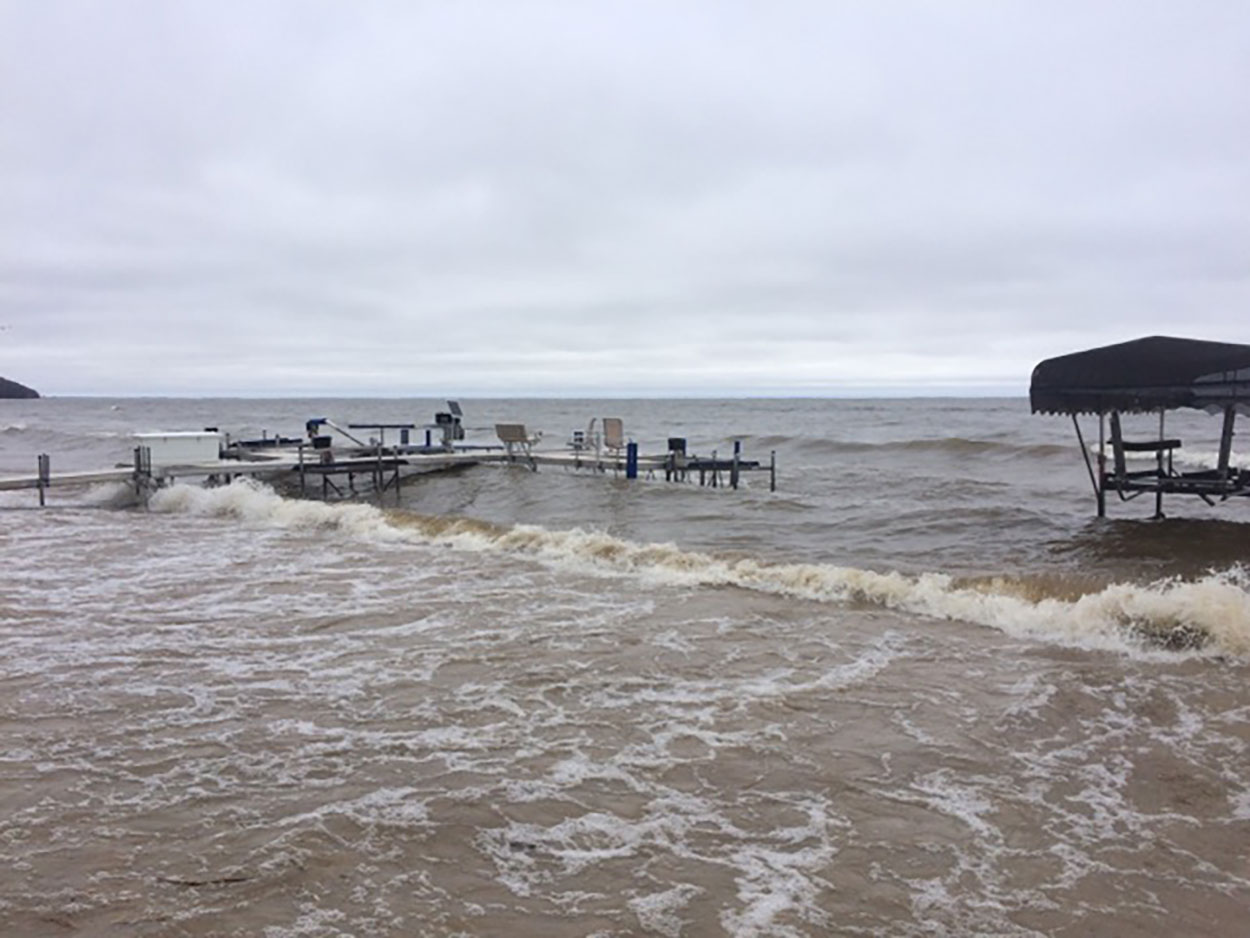
2019 Storm Challenges
2019 is proving to be a challenging year for most dock and boat lift owners. With record-setting water depths and strong, frequent storms, owners see the need for the higher lifting capacities.
Unlike people on small lakes, the Bay of Green Bay and Lake Winnebago present unique problems for boaters. The reasons are the storm surges. A storm surge is caused by sustained winds blowing in one direction with no rivers or creeks on the leeward side to relieve the pressure of the water piling up. Wave action of 4 or more feet on top of a water surge makes the situation even worse.
These two factors combined, mean you will need a lift that raises high enough to keep your investment from being damaged. You also need the most durable frame construction possible.
Frame strength is achieved by using a more substantial square or rectangular frame versus a round, thin tube. If the frame is not strong enough, you won’t get the extra protection your boat deserves. That’s why PWS only handles ShoreMaster boat lifts.
Rivers have unique problems in the form of fluctuations in water depth in early spring from snow melting and heavy rain runoff during the season. Any boat lift must be capable of handling the changing water levels here too.
Depth of water is another consideration.
Vertical lifts, with a “V” rack, require about 6″ of water plus the draft of the boat to operate. This low water requirement is vital if the water recedes in late summer or fall.
Boat length, width, and weight affect your choice.
PWS recommends that you consider not only the length, width, and weight of the boat you currently have, but also the possibility of a larger boat in the future. It will save you money in the long run. People frequently change to a bigger, better boat, so you should not ignore this issue.
Why do we insist on checking the weight you give us for your boat?
It’s not that we don’t trust you – we simply don’t trust you, but in a good way. Our reputation is on the line with every lift we sell, so it has to be the right one for your needs. Some salespeople quickly choose the lift you “need” without even looking up the Specifications to be sure. Remember, the weight is more than the boat weight.
See also https://wisconsinpws.com/boat-lift-calculations-part-4/
Will you raise the boat by hand or do you need a motor?
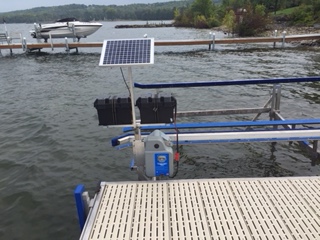
24 V Solar Panel arrangement
Do you want to raise your boat with the winch wheel or use a remote-controlled motor to do the work for you? 12V/24V D.C. motors power most boat lifts with 120V A.C. used less frequently.
Nature charges your battery via a solar panel, and there is no cost to do it.
A.C. versions, while available, require 120 V power at the boat site and require more care to prevent electrical shock.
What are the Frame Materials?
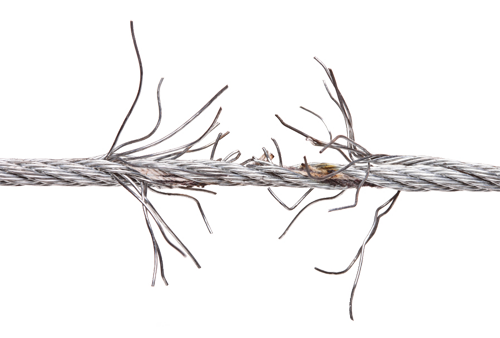
Corroded & Frayed Boatlift Cable
The most popular boat lifts in N.E. Wisconsin have aluminum frames and stainless steel cables.
There are still a few steel boat lifts around.
But they are few and far between due to their weight, limited lifting heights and susceptibility to rust.
Aluminum boat lifts will have either galvanized or stainless steel cables. Sometimes they have a combination of both materials. Stainless steel cables last as much as 2-4 times longer than galvanized steel cables and don’t rust.
What about the pulleys on the lift?
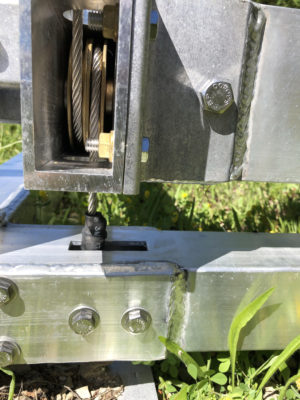
ShoreMaster Brass Pulleys
Pulleys on boat lifts will be either plastic, steel or brass construction. Robust brass pulleys with stainless steel hubs are
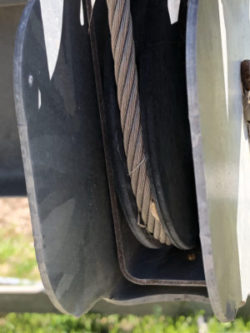
Plastic Pulleys
the best choice while plastic pulleys are not recommended even on the lighter PWC lifts. The heavier the boat, the more critical it is to have stainless steel and brass materials.
Plastic pulleys become brittle over time. Eventually, the edges break off, and the cable gets jammed between the frame and the pulley. Raising a boat with a jammed cable is extremely hard to do.
Who will install the boat lift?
A professional company is best suited to do this for you.
Boat lifts in the 5000# range or larger, definitely require professional installation and removal services. It’s not a job for amateurs. Do you have a dependable provider for this service? PWS has experienced, trained people and the necessary equipment to do it for you,
What is the Warranty?
Many boat lifts come with a 1 or 2-year factory structural warranty. Some have five-year, and a few even have a 10-year warranty. ShoreMaster boat lifts carry a full 15-year structural warranty. The 15-year warranty is the best on the market.
SEE https://shoremasteravala.blob.core.windows.net/media/1588/shoremaster-warranty-12142016.pdf
Now it’s up to you! Our recommendation? See what your neighbors have to say about PWS.

Customer Testimonials
Do you have a friend that might be interested in this post? Please forward it to them.
Pier & Waterfront Solutions
PWS is located at 7325 St. Hwy 57. That’s 1 mile North of County MM (Hwy 42) and 3 miles south of Sturgeon Bay at the Idlewild Road intersection. Or – for more information, you can call Jerry @ 920-493-4404.
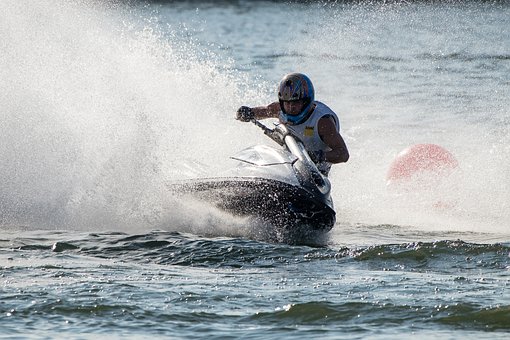
Jul 23, 2019
JET SKIS and THE LAW
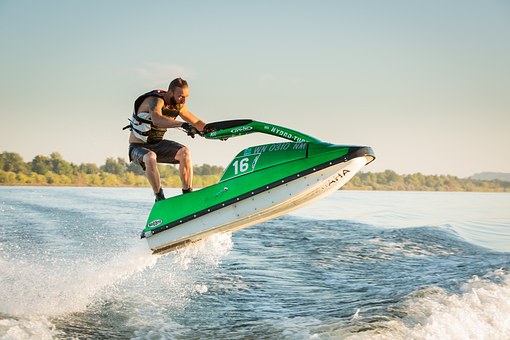
Stand-up PWC
State & Federal law has a lot to say about how you operate your Jet Ski.
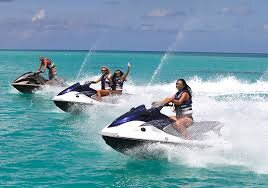
Keep 100 feet apart
Many people don’t realize there are legal ways and some NOT so legal ways to operate a PWC or jet ski.
Beyond the usual title and registration that everyone expects, there are specific laws that apply to PWC’s.
Who can operate a jet ski?
In Wisconsin, a person younger than 12 years of age, may not operate a PWC or jet ski.
12-15 years olds may operate a pwc ONLY If they have completed a boating safety course. The Wisconsin DNR must accept the course. Sorry, you can’t substitute parental supervision for this course.
A person at least 16 years old may operate a PWC only if they have completed an accepted boating safety course.
Were you born before Jan 1, 1989?
You are exempt from the course requirement.
No one under 16 years old may rent or lease a PWC.
Remember if you have taken the proper courses, you must carry a copy of the certificate with you and make it available to law enforcement officers when requested.
In addition to the U.S. Coast Guard, Wisconsin conservation wardens, county sheriffs, and municipal police enforce the laws.
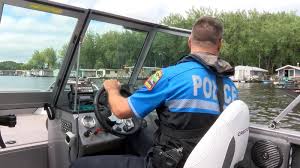
Boat Safety Rule #3- Don’t get a visit from him
Just like driving a vehicle, it is illegal to:
- refuse to follow the instruction of a law enforcement officer.
- A pwc operator must slow to “no-wake” or “slow” and give way to a patrol boat if it’s emergency lights are on or if they signal you to stop.
- You must stop when requested or signaled by a law enforcement officer or patrol boat.
- Furthermore, you must reduce speed to “slow” or “no-wake” and stay at least 100 feet from a patrol boat with its emergency lights activated. It’s similar to pulling into another lane when you see an emergency vehicle on a roadway.
You must have the legally required equipment on board at all times including:

Boat Safety Rule #1- Everyone needs one
- PFD (personal flotation device or life jackets) even on canoes and kayaks.
- Kids under 13 must WEAR their PDF while underway on a pwc on federally controlled waters.
- EVERY person on a pwc MUST wear an approved PDF.
- You must wear the proper size PDF, and it must be in good and serviceable condition. No tears, rips, broken straps, or snaps.
Do I need a sound-producing device (Horn) on a PWC?
No! UNLESS you are on federally controlled waters like Lake Michigan.
Are we done? Not Really!
It is against the law to operate a vessel in a negligent or reckless manner such as in a manner that causes danger to life or limb.
Here are some examples:
Operating a vessel within 100 feet of the shoreline, a raft or pier at speeds higher than “no-wake” or “Slow.”
Jumping the wake of another vessel that is towing someone;
Operating a pwc within an area which is marked off for swimming;
Weaving your craft through congested waterways;
Causing hazardous wave or wake conditions while passing another vessel;
Steering toward another object or person and swerving at the last moment; or chasing, harassing or disturbing wildlife.
Overloading your vessel
If you have a pwc rated for two people, that is the maximum number you can have on it at any time regardless of weight or age.
These are just some of the laws you must follow.
Think of operating a vessel like you would a car. If it’s not legal in a car or truck, don’t try it on the water. Example – Do NOT drink and drive!!
Visit the DNR website at www.dnr.wi.gov and enter “boat safety” to find acceptable boating courses. Also, look for https://dnr.wi.gov/files/pdf/pubs/le/le0301.pdf
To read part one of this series go to https://wisconsinpws.com/pwc-jet-ski-users-guide
Keep us all safe, and we’ll all enjoy the water more on a PWC.
Do you have a friend that might be interested in this post? Please forward it to them.
Pier & Waterfront Solutions
PWS is located at 7325 St. Hwy 57. That’s 1 mile North of County MM (Hwy 42) and 3 miles south of Sturgeon Bay at the Idlewild Road intersection. Or – for more information, you can call Jerry @ 920-493-4404.
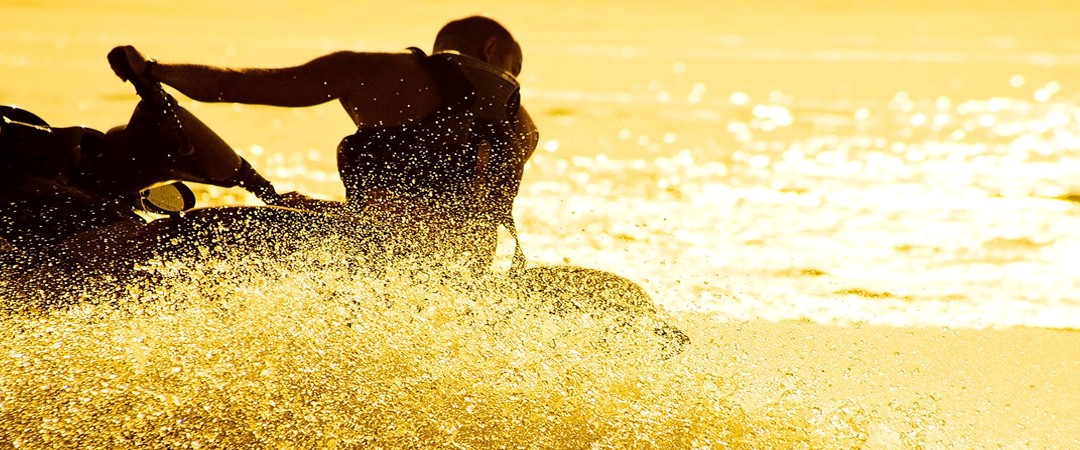
Jul 16, 2019
Are there different Styles?
Yes, they come in two styles: Stand-Ups and Sit-Downs.
Both styles use water to create thrust to provide propulsion. The propulsion also controls the steering. Therefore, the motor has to be running to use either or both features.
Stand-up jet skis require a great deal of balance as any experienced operator will tell you. I suggest that your first jet ski ride happens on a sit-down unit.

Stand-up PWC
Stand-ups are not easy to control, and a strong wave can easily throw you off balance. That means you are going for a swim, whether you want to or not!
You have greater control on a sit-down from a slow idle to full speed ahead. The sit-down type is more comfortable to ride, and, if maneuvered correctly, you don’t even have to get wet! But who wants that! The wetter you are, the better.
Before your first trip on a PWC (here comes the checklist)
Jet ski riders do get injured; which makes it important to familiarize yourself with the specific watercraft you’ll be riding.
Injuries?? From what?! How about getting thrown off your ride for one. It’s very easy to do when you are turning at full speed. It’s exciting also.
Despite this, safety should be your first concern – both for you, your passenger, and people in the immediate area.
Know your machine’s controls and capabilities! Know your abilities as well. Different brands will have different controls, so make sure you know what’s the throttle and what’s the emergency shut off. Throwing the wrong switch could be very embarrassing (and dangerous).
Make sure you have enough fuel and all the proper safety equipment too.
My First Jet Ski Ride – what do I need to take with me?
The U.S. Coast Guard considers a PWC to be a Class A vessels. Therefore you must follow all rules and regulations for boats under 16 feet. Before that ride, make sure you have the required safety equipment. Not only to satisfy the Coast Guard but for your own safety as well.

Boat Safety Rule #1- Everyone needs one
Wear Coast Guard-approved life jackets/PFDs at all times. It’s a law that you and passengers can live with! Dress appropriately in a wetsuit, if possible. Wear simple feet protection and don’t forget eye protection. In most cases, your face will be pelted with stinging water while on your ride.
Check if your state requires a license while operating a PWC. If so, you may have to take a jet ski safety course to qualify for your license. The course may make you eligible for a PWC insurance discount too! Carry the proper documentation, such as vessel registration. It’s wise to have some form of identification also in case you are incapable of responding.
Secure a Coast Guard-approved fire extinguisher onboard if possible.
What else should I have?
Carry an audible signaling device, such as a whistle or horn. Don’t forget to check your fuel gauge. You will forget the time (a good thing for most of us) but bad if you run out of daylight or fuel! The driver of the jet ski must wear a lanyard around their wrist, which is attached to the key in the ignition. It’s known as a kill switch cord. The kill switch will turn off the engine in case the driver gets thrown off the unit. Some models may shut down if the throttle is released (as you go flying through the air).
Back at the dock, don’t forget to remove the cord! It stops any unauthorized use, whether preventing theft or safely securing the jet ski from daring young teenage riders.
What do I do if I fall off?
No doubt you will fall off, so here’s what you do.
Don’t panic. Re-boarding is a breeze if you follow these steps!
1. Turn the unit over from the side but watch the steering. It might hit you if you’re not careful.
2. Swim to the stern (back) to re-board. Re-boarding from the side may cause the unit to flip over, right on top of you.
3. There are handles or straps on the back of the seat. Use them to pull yourself up.
4. Move forward to the seat and don’t forget to re-attach the safety lanyard.
5. Of course, you were wearing a life preserver all this time.
Riding a Jet Ski with Passengers
It’s no surprise you will become very popular with your friends and family. They all want to ride on, or better yet, drive it themselves. If so, there are some extra steps to follow:
Carry only the permitted number of passengers that the jet ski allows. Don’t pile the kids on even for a slow speed ride. Make everyone wait their turn. Don’t forget there is a weight limit also. You must follow that limit.
All passengers must sit behind the driver.
Whenever the jet ski’s moving, have passengers secure themselves onto the seat straps provided. They will be the first to get thrown off the unit in a sharp turn at high speeds.
Make sure no one places their feet in the water while you are moving.
Demonstrate the basics of driving a jet-ski to all passenger’s. Why? If the driver becomes injured, it could come in handy! Make sure they know how to re-board if they are thrown off and you are injured.
Lookout for blindspots while turning.
Riding jet skis is a fun-filled summer pastime, but only if you do it correctly and safely. It takes practice. With practice, you’ll be ready when your time comes.
Be safe but have fun. Get out there and ride!
Next week we will talk about jet skis and THE LAW! https://wisconsinpws.com/jet-skis-the-law/
Do you have a friend that might be interested in this post? Please forward it to them.
Pier & Waterfront Solutions
PWS is located at 7325 St. Hwy 57. That’s 1 mile North of County MM (Hwy 42) and 3 miles South of Sturgeon Bay at the Idlewild Road intersection. Or – for more information, you can call Jerry @ 920-493-4404.
Jul 14, 2019
Hi Jerry
Pleasure working with you.
Thank you for the extra effort.
Much Appreciated
Joe H
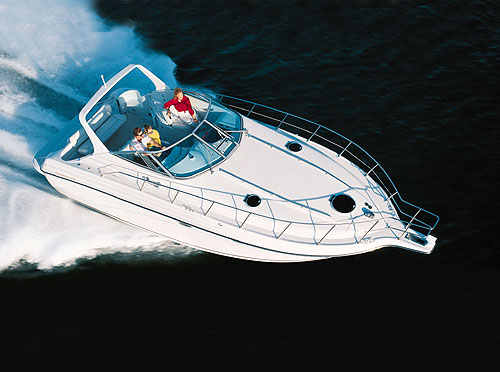
Jul 9, 2019
HOW TO SAFELY STEER A BOAT
The boating season is underway. You are either a Newbie or a returning “veteran” to boating. Maybe you need a few reminders about how to steer a boat into a lift.
Newbies – we recommend that you wait for a calm day with very little wind to start practicing your technique. If you practice these maneuvers without the stress of winds or waves, it will be a lot easier to understand what you have to do. Initially, practicing in waves will only result in damage to your boat or equipment.
Your ability to steer into a boat lift correctly is critical. It can mean the difference between damage or no damage. Even an experienced boater has to constantly adjust his docking technique each time he/she approaches a lift. Factors, like wind and the changing waves and current, will force you to make adjustments continuously.
WHAT SHOULD I LOOK FOR?
FIRST – Know how deep the water is around your boat lift. How far can you lower your motor while you maneuver into your lift? Did the ice bring in any boulders this past winter? Reminder – the lower your motor is, the better overall control you have of the boat.
Consider this – if your prop is near the surface, you will have little or no control of direction or speed. If the surface water is being churned up by the prop, you have limited your control of the boat.
SECOND, as you approach your lift, ALWAYS have the motor in neutral BEFORE you turn the motor. This way, when you re-engage the motor, you will immediately go in the direction you intended to go. It is recommended that you lower your speed, shift into neutral and then turn the motor before re-engaging the throttle.
THIRD – Watch your boat speed. Always steer into the lift with a controlled speed. How slow? How much damage do you want to incur?
That’s the determining factor. At the same time, the slower you are moving, the less control you will have. It’s a delicate balance.
If you apply too much (or even too little) power, it can also be a problem. You must maintain enough speed to overcome the wind and waves. The best approach to take is to approach your lift at a steady pace by applying short bursts of power. This technique allows you to change directions and steer easily without losing control.
WATCH FOR MOORING LINES & PEOPLE
Watch for any mooring lines hanging over the side and aft of the boat. How about those lines from the dock?
Remember, mooring lines on a dock can move with the wind and currents. They can seriously damage your prop if they become tangled.
Don’t forget to watch for people (especially kids) in the water. The prop can do terrible damage to a body. NEVER allow someone to be near the stern of the boat while in the water. Kids get excited and want to “help” you bring your boat in. People may want to help you by hanging over the side of the boat or dock. Don’t allow it.
POSITION YOUR BOAT
Need to adjust your direction? Reduce engine speed, shift the motor into neutral, turn the motor, then apply short bursts of power. Short bursts help you to maintain controlled movement, forward or back.
Correctly positioning your boat on the lift is very important. See this article for more information.
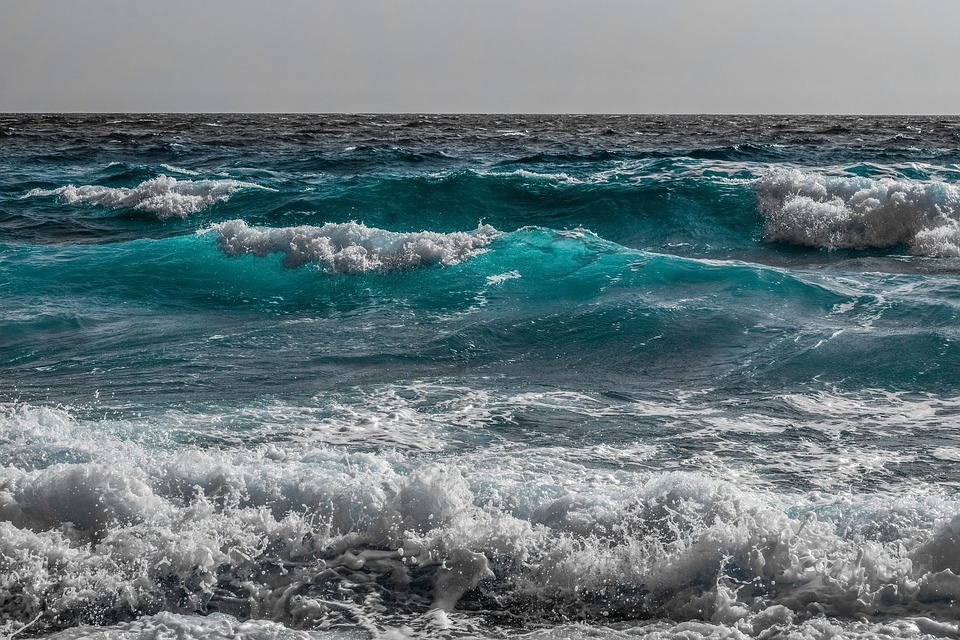
How to steer with waves
FACTOR IN THE WIND AND WAVES
When you steer, allow for changing winds coming from either side. Your boat acts as a big “sail,” and it will follow the direction of the wind, so adjust for it. Waves and winds are the tricky part of maneuvering your boat into a lift. You will seldom have a perfectly calm day with no wind or waves. The early evening might be the best time to practice your boating skills.
USING THE PIVOT POINTS
Unlike a car, a boat will literally “slide” across the surface of the water sideways. A boat has no grip on the water, unlike car tires on a road. A power boat is steered by a motor located at the stern instead of in a car by the front wheels.
Think of a boat as a wheelbarrow but without a steerable wheel. A boat acts like a wheelbarrow in that, instead of turning the front wheels, you change the direction at the rear of the boat much like a wheelbarrow. In reality, the front of the boat acts similar to a pivot point while the stern is the steering point.
One more thing to remember – the boats “pivot point” is usually about 1/3 of the way back from the bow of the boat. It is not at the bow. Notice that the boat is pivoting at this imaginary point so that the bow goes one way and the stern the other.
Try this – On a calm day with the boat drifting, take the motor out of gear and turn the wheel for a hard right or left turn. Next, shift into forward and give the engine a short burst of power. Watch where the pivot point is. It won’t be at the bow. The only time the bow is the pivot point is if you have side thrusters or are tied to a fixed point.
If you do the same procedure but shift into reverse the pivot point shifts to 1/3 of the way from the stern of the boat. Watch the position of the bow because it is now swinging the most.
DOES THE WIND AFFECT HOW YOU STEER INTO A BOAT LIFT?
Wind affects boat handling in two ways:
1) The bow always drifts downwind because it has less drag than the stern where the motor is located. The motor produces drag, therefore it acts as an “anchor” of sorts.
2) A slow-moving boat will drift downwind. You must be aware of the strength and direction of the wind at all times.
The simplest way to hold the position in the water when stopped is to reverse the motor gently and keep the stern to the wind. By going in reverse, you move the pivot point to the stern enabling the bow to swing downwind.
Slide
A car on an icy road can cause a loss of control. When a car loses control like this, you must turn in the OPPOSITE direction of the skid. When changing the boat direction, the amount of slide depends on :
-
-
-
-
-
-
-
-
- How fast you were going;
- The type of boat, and
- The underwater configuration of the hull.
A slide can be a hindrance, but it can also be used to assist entering a boat lift. How do you ask? By approaching a boat lift so that the slide drifts the boat into the lift.
Summary
Boat safety is essential, not only with your dock but also with how you steer the boat into the boat lift. Don’t forget about the people around it.
Applying these tips will help you to keep your boat from getting damaged and your family from getting hurt.
Do you have a friend that might be interested in this post? Please forward it to them.
PWS is located at 7325 St. Hwy 57. That’s 1 mile North of County MM (Hwy 42) and 3 miles South of Sturgeon Bay at the Idlewild Road intersection. Or – for more information, you can call Jerry @ 920-493-4404.




















